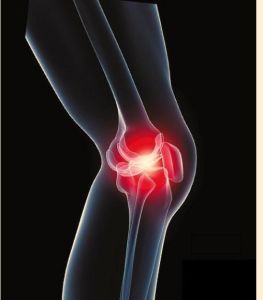Newswise — SAN FRANCISCO— For the first time, chondroitin sulfate has been more successful than celecoxib in reducing the long-term progression of knee osteoarthritis (OA), according to new research findings presented this week at the American College of Rheumatology Annual Meeting in San Francisco.
Osteoarthritis is a slowly progressive disease in which joint cartilage breaks down. Normally, cartilage on the ends of bones allows smooth, pain-free joint movements. In OA, cartilage becomes thin and irregular, resulting in symptoms of joint pain and stiffness. Grinding or cracking sensations may occur. Joints that are under high stress due to repeated activity or weight bearing are most susceptible to OA. The hips, knees, hands and spine are commonly affected. OA becomes more common with aging.
Chondroitin sulfate, more commonly called chondroitin, has long been the subject of debate when it comes to its usefulness in treating OA. Canadian researchers recently explored how this treatment would affect how OA progresses as well as how it compared to celecoxib (Celebrex) – an often used first-line symptomatic treatment in the disease.
“We felt the present study was necessary in order to establish — using the most recent imaging technology available, quantitative magnetic resonance imaging (qMRI) — whether chondroitin sulfate can truly and effectively reduce the progression of the disease in patients suffering from knee OA,” says lead investigator in the study, Jean-Pierre Pelletier, MD; professor of medicine, University of Montreal; director, Rheumatic Disease Unit, Department of Medicine, University of Montreal School of Medicine; head, Arthritis Division, University of Montreal Hospital Centre (CHUM); head, Chair in Osteoarthritis of the University of Montreal; and director, Osteoarthritis Research Unit, University of Montreal Hospital Research Centre (CRCHUM).
Dr. Pelletier’s team studied 194 people with knee OA and inflammation of the synovial membrane in the knee. The participants were followed for two years and were divided into two groups. The first group took 1200mg (pharmacological preparation) of chondroitin daily, and the second group took 200mg of celecoxib daily.
After the initial evaluation, the researchers followed up with participants again at one and two years to look at a number of factors that would indicate the effectiveness of chondroitin. At all three touchpoints with the participants, the researchers performed MRIs to detect loss of cartilage, changes in bone marrow legions, and thickening of the synovial membrane in the knee. Additionally, patients were evaluated for swelling and fluid in the knee and their overall symptoms — collected through the visual analogue scale and Western Ontario and McMaster Universities Osteoarthritis Index; VAS and WOMAC, respectively.
At both one and two years, the researchers found a better reduction of cartilage loss in the whole knee, and more particularly in the inner half, of the participants on chondroitin when compared to those on celecoxib. Additionally, there was a decrease in synovial membrane thickness in some of the participants on chondroitin, showing far better results for this group. “These findings are most important as they demonstrate that chondroitin, in contrast to celecoxib, can reduce the loss of cartilage, at least in part, by reducing synovial inflammation (thickness),” Dr. Pelletier says.
Both groups noticed a marked reduction in swelling and fluid in the knee in a large number of patients. Both groups also showed a similar effectiveness at reducing OA symptoms over the course of the study. Finally, both groups were able to reduce the amount of acetaminophen they took each day, and both experienced a good tolerance to the treatment they were taking.
“This study demonstrates that both chondroitin sulfate and celecoxib are equally effective at reducing the symptoms of knee OA patients. However, only chondroitin sulfate was found to be capable of slowing down the progression of the disease by reducing the loss of cartilage,” Dr. Pelletier remarks, while also noting further studies to establish the effect of chondroitin in other joints could be of interest.
While these results are promising, Dr. Pelletier would like to point out that the study only used pharmaceutical-grade chondroitin, and results may not be similar for all chondroitin products such as food supplements. Therefore, he recommends that patients consult with their physicians on the use of such treatment for OA.
















